Reference images are crucial to theatrical design. You will want to see both historical images (to get an idea of what Victorian England really looked like) and theatrical images (to see how others have produced this play).
When you find an image, consider where it came from. Why was it created, when and by whom? If this information is not provided, you don't know whether the image is authentic, which limits its usefulness.
Type of image matters!
Of course, for some periods of time, primary sources may be difficult to come by.
Secondary sources are fine, but it's a good idea to back them up with primary sources, or, if you can't, to look at as many different secondary sources as you can.
ArtStor is expected to be retired by August 1, 2024. For additional information please review the ER Dashboard.
Reference works are great for quick information about context. Questions about aesthetic movements, particular theatrical strategies such as masks, or important individuals can often be answered with this sort of resource.
The bibliographies of reference works can help you find more detailed information.
Some potentially useful references are listed on the right side of this page.
Books often include both images and textual information, so they can show you both what something looks like and how it was used.
You might start with a general keyword search, perhaps just something broad, like Victorian fashion..
Some of your results won't be relevant, but if you click on one that is, you'll find a list of subject headings that tell you what the book is about, and if you click on one of the subject headings, you'll find other books on the same topic.
One of the things that's a little easier with OneSearch is modifying that topic, or searching within it.
For example:
One of the headings I came across was Women's clothing -- History -- 19th century.
I could look for other books with this exact subject, or I could just take the first part of it (Women's clothing"), and add my own search terms as keywords.
Alternatively, I could modify it! If Women's clothing is a subject heading... then there's probably also a subject heading for men's clothing.
If you want to find subject headings more directly, you can find them under "Browse" in the OneSearch menu.
I have compiled a partial list of subject headings that you may find useful:
Note that these examples are just here to give you an example of the kinds of words that are used in subject headings. There are probably many more that you may find useful.
Words that come after the dashes are subheadings -- they further subdivided the subject heading into parts. So, Architecture, Domestic -- England is a subject heading, but you can remove England and replace it with other countries, or you could use the search to look for other keywords within the concept of domestic architecture.
